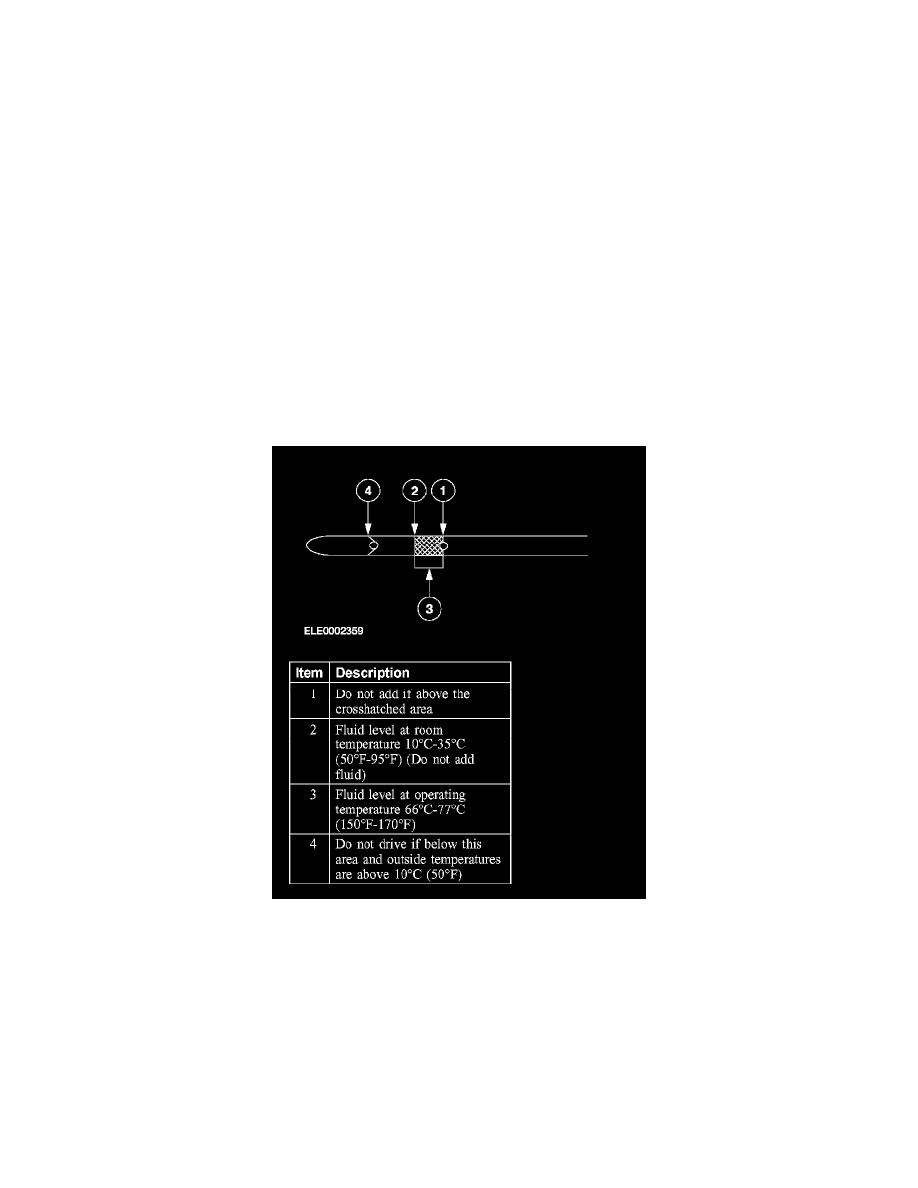Mariner 2WD L4-2.3L VIN Z (2005)

Fluid - A/T: Testing and Inspection
Transmission Fluid Level Check
Check Fluid Level and Condition
CAUTION: The vehicle should not be driven if the fluid level is below the bottom hole on the fluid level indicator and the outside temperature is
above 10°C (50°F).
NOTE: Automatic transmission fluid expands when warmed. If your vehicle has been operated for an extended period at high speeds, in city traffic,
during hot weather, or while pulling a trailer, the vehicle should be turned off for about 30 minutes to allow the fluid to cool before checking.
The transmission fluid level should be checked at normal operating temperatures, 66°C - 77°C (150°F - 170°F), on a level surface. You can check the
fluid level without driving if the outside temperature is above 10°C (50°F). When the vehicle has not been driven, and the outside temperature is
above 10°C (50°F), the fluid level should be between the holes on the indicator. If the transmission fluid is to be checked when the fluid is at room
temperature, the fluid level indicator could indicate that fluid should be added if the indicator is misread. If fluid is added at this time, an overfill
condition could result when the vehicle reaches operating temperature of 66°C - 77°C (150°F - 170°F).
Fluid Level Check
1. Park the vehicle on a level surface and engage the parking brake.
2. With your foot on the brake, start the engine and move the range selector lever through all the gear ranges. Allow sufficient time for each gear to
engage.
3. Place the range selector in PARK (P) and leave the engine running.
4. Remove the fluid level indicator and wipe it clean with a clean cloth.
5. Install the fluid level indicator, making sure that it is fully seated in the filler tube.
6. Remove the fluid level indicator. The fluid should be in the designated areas for normal and room temperature.
High Fluid Level
Fluid levels above the safe range may result in transmission failure. An overfill condition of transmission fluid may cause shift or engagement
concerns and possible damage. High fluid levels can be caused by an overheating condition. A fluid level that is too high may cause the fluid to
become aerated due to the churning action of the rotating internal parts. This will cause erratic control pressure, foaming, loss of fluid from the vent
tube and possible transmission malfunction and/or damage. If an overfill reading is indicated drain and refill the transmission.
Low Fluid Level
Do not drive the vehicle if the fluid level is below the hole at the bottom of the fluid level indicator, or not on the fluid level indicator and the outside
temperatures are above 10°C (50°F). A low fluid level could result in poor transmission engagement, slipping, malfunction and/or damage. This could
also indicate a leak in one of the transmission seals or gaskets.
